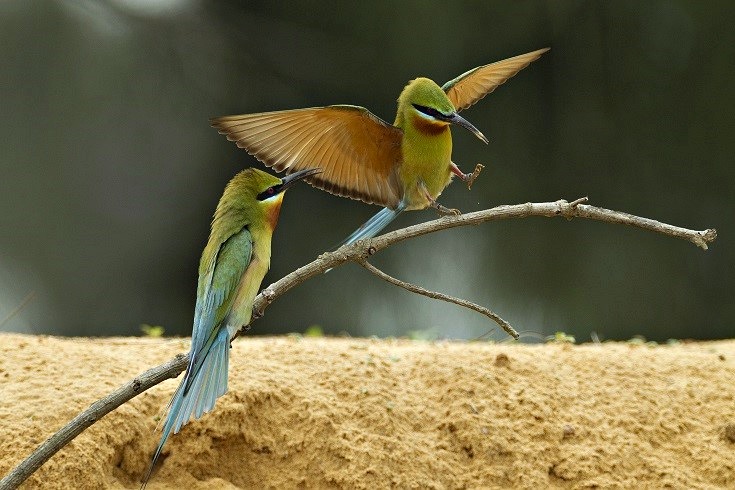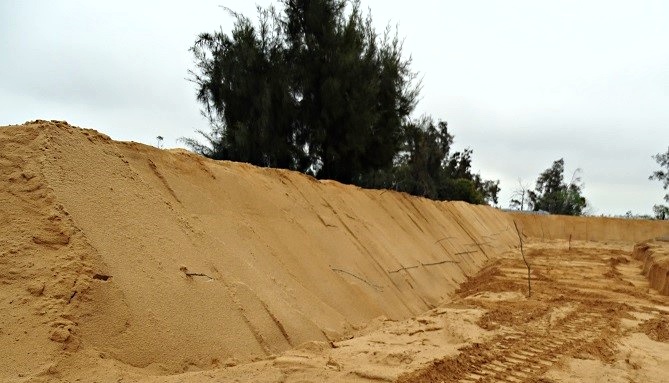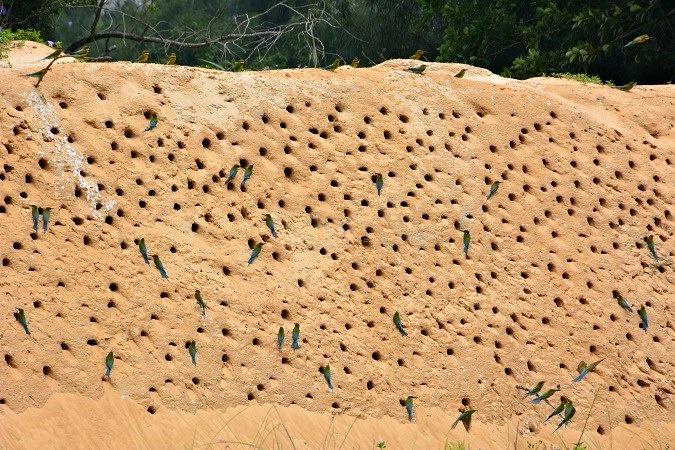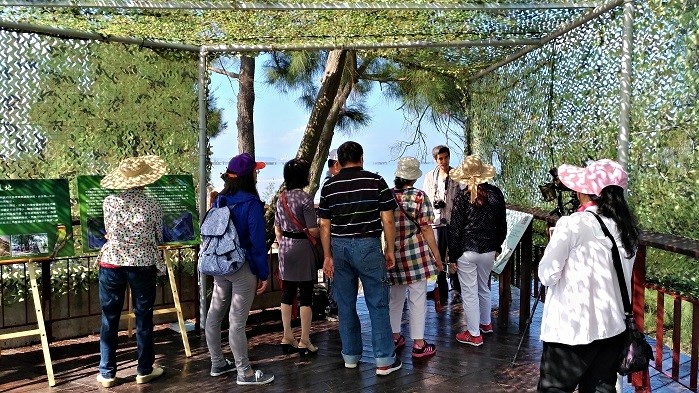Merops philippinus (the blue-tailed bee-eater) was named the "Summer Fairy" due to its colorful feathers and excellent hunting skills. Its main habitats are in Southeast Asia, New Guinea, Philippines, Sri Lanka, India, and southwest China. Each year about 3,000 Merops philippinus birds arrive in Kinmen to spend the summer. These summer visitors are highly anticipated by bird watchers in Asia.
Merops philippinus has a particular breeding habit, where it likes to nest in holes in earth mounds, slopes, or walls such as those found on the coast, and in gullies and quarries. They also have natural habits such as building nests in groups, and collaborating in breeding. A investigative survey by the Kinmen National Park Headquarters research team has found the unique nesting habitats of the blue-tailed bee-eaters, where all their hole nests are distributed on the slopes resembling a chess board. Local elders call them "Chess Board Birds", giving them an extra connection to the local region.

arrive in Kinmen to spend the summer.
The Kinmen National Park Headquarters has long been conducting habitat maintenance and slope repairs at the Youth Farm and the Cihu Triangle Fortress. Old nest holes on the slopes are cleared away, the ground is firmly compacted, recovered with vegetation, so that blue-tailed bee-eaters are attracted to come and nest.

habitat maintenance and slope repairs at the Youth Farm.

After monitoring over a long period, and the manual restoration of the habitat, the blue-tailed bee-eaters have begun to nest in stable conditions, and the total number of the birds is gradually growing. Each nest is about 1 meter deep, with 4 to 5 eggs on average that are incubated for 21 to 25 days. A keep focus in the blue-tailed bee-eater conservation work for the Kinmen National Park Headquarters is to conduct precise observations while reducing any disturbance to the birds.
Therefore, last year (2017) the Kinmen National Park Headquarters installed camouflaged "bird watching tunnels" at the largest nesting area, the Youth Farm. This year (2018), the Cihu Triangle Fortress habitat is expanded to the small trenches area and the habitat next to the Boat-Shaped Fortress and the Ronghu constructed wetland are repaired to extend the range of the conservation work. The Triangle Fortress is also installed with a 360-degree surround surveillance system, which can stream the view inside the tunnel to offer friends off the island who are unable to visit in person a peek at the glorious Summer Fairy the blue-tailed bee-eater. (Live streaming of the Triangle Fortress habitat )

camouflaged "bird watching tunnels" at the Youth Farm.

is expanded to the small trenches area and
the habitat next to the Boat-Shaped Fortres.
Every year during mid-June is the peak breeding season for blue-tailed bee-eaters. The Kinmen National Park Headquarters and the Wild Bird Society of Kinmen will work together to host 18 conservation awareness events at the Cihu Triangle Fortress every weekend from 8AM to 12PM during the end of May to the end of July. The events will have professional speakers at designated spots to offer information for bird-watching visitors. The public will learn about the importance of reducing disturbance and not damaging the habitat through these detailed explanations of the natural habits of the blue-tailed bee-eaters.

of Kinmen will work together to host 18 conservation
awareness events at the Cihu Triangle Fortress
every weekend from 8AM to 12PM
during the end of May to the end of July.

designated spots to offer information for bird-watching visitors.


![Text size [Small]](/media/system/images/font_small.jpg)
![Text size [Medium]](/media/system/images/font_normal.jpg)
![Text size [Large]](/media/system/images/font_big.jpg)




